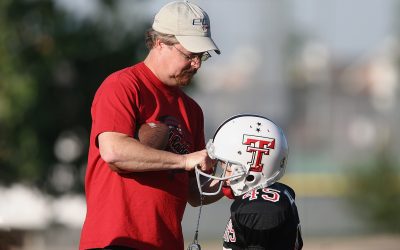The first Monday Night Football game of 2019 between the Houston Texans and the New Orleans Saints was a great one. “The Saints took possession with 37 seconds remaining in the game, used 36 of those seconds to drive to the Texans’ 40-yard line, and put Wil Lutz on the field to attempt a winning kick.” His line drive was a 58-yard field goal, a personal best, “giving the Saints a walk-off 30-28 win,” reported ESPN. It was a highlight for me on week one.
What I remember just as much from the game, however, was its beginning. The ESPN cameras were on the sidelines before the game started, capturing Drew Brees from the Saints and J.J. Watt from the Texans talking passionately to their teams. These were players, not coaches, firing up their teams, reminding them of their game plan for offense and defense and how they had what it took to win the game. In other words—it was teammates leading teammates.
Every Great Team Has Great Leadership
Over the years at Growing Leaders, we’ve identified that every championship team possesses great leaders on those squads. Talent is not enough. Work ethic is not enough. And the leadership is not just from the coaching staff but from those on the team. Members of the team ultimately take ownership of the collective mission, make it their own, and find a way for their fellow team members to listen and follow. The Saints’ offense follows Drew Brees. The Texans’ defense follows J. J. Watt. I think, however, that those players don’t follow Brees and Watt because of their words but because of what they do in addition to their words.
Leadership is ultimately about influence and that happens in a variety of ways.
The Captain Class
Sam Walker studied the leadership of elite teams and found that what we think captains do and what the leadership of those teams actually looks like often differs. In his book The Captain Class, he identifies seven traits of elite captains:
- Extreme doggedness and focus in competition
- Aggressive play that tests the limits of rules
- A willingness to do thankless jobs in the shadows
- A low-key, practical, and democratic communication style
- Motivation of others with passionate nonverbal displays
- Strong convictions and the courage to stand apart
- Ironclad emotional control
Not exactly what we would expect? Kyle Stark, assistant general manager of the Pittsburgh Pirates said,
“When we look at it deeper, we realize that it is more about what you do—serving others and modeling championship behavior—than what you say. We realize it is more about connecting and listening—a low-key, practical communication style—rather than talking and commanding. We realize that it’s more about respectfully challenging the status quo directly—either the leadership or the current level of performance—rather than trying to fit in and be popular with others who share our sentiments. Ultimately, it is more about being uncommon than common, because everyone can talk the talk, complain to people who cannot do anything about it, make excuses, and care just enough rather than display extreme doggedness and focus in the pursuit of the mission.”
nd you don’t have to be a captain or a coach.
Those traits do not require anything special. We all have the potential to develop such traits. In other words, we don’t have to be a captain to act like a captain. The difference is whether we choose the collective mission over our own comfort or ego. Championship leadership requires members of the team to take ownership of the collective mission and commit to the above traits. Authority is given by a coach who offers the position of team captain. But influence is earned by anyone who chooses to practice the seven traits Sam Walker talked about.
I love telling the story that Dave Hart told me when he served as director of athletics at Florida State University years ago. During football practice, Coach Bobby Bowden stood on the platform high above the field watching his team get ready for Saturday. When Dave joined him and began a conversation, he noticed a fight break out among some freshman players. Interestingly, Coach Bowden didn’t even flinch. He continued talking to his boss on the platform.
Instantly, Dave said, “Coach, aren’t you going to stop the fighting down on the field?”
Coach Bowden nonchalantly said, “Oh, the players will settle it.”
And he was right. Two teammates jumped in, pulled the first-year players apart and said in loud voices, “That’s not how we do things here at Florida State.”
Those two players were not captains, but they were leaders.









0 Comments